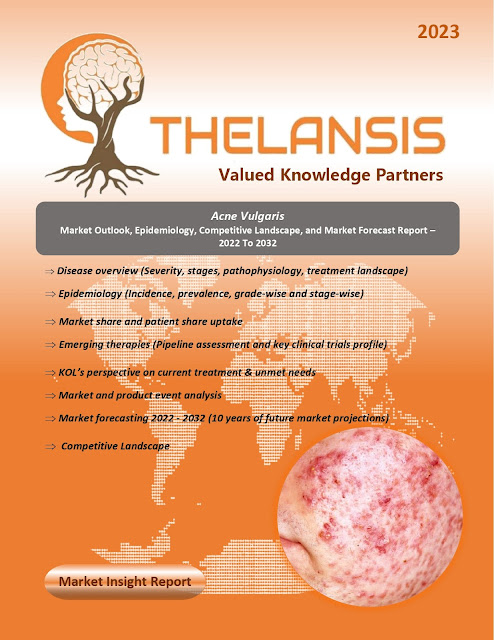Invasive Aspergillosis (IA) – Market Outlook, Epidemiology, Competitive Landscape, and Market Forecast Report – 2023 To 2033
In critically ill patients within the intensive care unit, including those with severe influenza and severe COVID-19 infection, Invasive Aspergillosis (IA) is increasingly recognized. While primarily affecting the lungs, aspergillosis can manifest in virtually any organ system, and disseminated disease is prevalent in patients with prolonged granulocytopenia following chemotherapy. Despite progress in diagnosing and treating IA, mortality rates remain elevated, especially in immunosuppressed individuals. Triazole resistance has emerged in some global regions, posing a significant concern for management due to limited options for treating azole-resistant infections and the potential for prophylaxis failure in immunocompromised hosts. Cryptic species of Aspergillus, which are morphologically challenging to identify, have gained importance due to higher azole antifungal minimum inhibitory concentrations (MICs), difficulty in differentiation based on appearance alone, and the uncertain clinical outcomes and therapeutic challenges they pose. With over 250 species of Aspergillus, various subgenera, and multiple sections, the most frequently isolated species in invasive disease cases are A. fumigatus, followed by A. flavus, A. terreus, and A. niger. While most Aspergillus species reproduce asexually, some may have a teleomorph (sexual) form. Aspergillus spp are ubiquitous in the environment, found in water, food, air, and soil, occupying a clear environmental niche.
Patients undergoing hematopoietic stem cell transplantation (HSCT) face the highest risk of IA, particularly invasive pulmonary aspergillosis (IPA) and sinus disease. Risk factors in this population include:
- Prolonged neutropenia
- Defects in cell-mediated immunity
- Extended immunosuppressive therapy for graft-versus-host disease (GVHD)
Individual patient risk varies based on the type of stem cell transplant (SCT), ranging from 0.5% to 3.9% among allogeneic transplant recipients, with lower rates in those receiving autologous SCT. IA is also prevalent among solid organ transplantation (SOT) recipients, especially lung transplant recipients. The clinical presentation of aspergillosis varies, depending on the site of involvement and the host's ability to mount a robust immune response. While the upper airways, trachea, bronchi, lung parenchyma, and contiguous structures are commonly affected, dissemination or infection can occur in any organ system. Clinical syndromes may be categorized into allergic manifestations, noninvasive saprophytic infections, semi-invasive syndromes, and invasive diseases.
- Globally, over 800 million people suffer from invasive fungal infections (IFIs), with yearly death rates (1,660,000) surpassing those of malaria (445,000) and comparable to tuberculosis (1,700,000).
Thelansis’s “Invasive Aspergillosis (IA) Market Outlook, Epidemiology, Competitive Landscape, and Market Forecast Report – 2023 To 2033" covers disease overview, epidemiology, drug utilization, prescription share analysis, competitive landscape, clinical practice, regulatory landscape, patient share, market uptake, market forecast, and key market insights under the potential Invasive Aspergillosis (IA) treatment modalities options for eight major markets (USA, Germany, France, Italy, Spain, UK, Japan, and China).
KOLs insights of Invasive Aspergillosis (IA) across 8 MM market from the centre of Excellence/ Public/ Private hospitals participated in the study. Insights around current treatment landscape, epidemiology, clinical characteristics, future treatment paradigm, and Unmet needs.
Invasive Aspergillosis (IA) Market Forecast Patient Based Forecast Model (MS. Excel Based Automated Dashboard), which Data Inputs with sourcing, Market Event, and Product Event, Country specific Forecast Model, Market uptake and patient share uptake, Attribute Analysis, Analog Analysis, Disease burden, and pricing scenario, Summary, and Insights.
Thelansis Competitive Intelligence (CI) practice has been established based on a deep understanding of the pharma/biotech business environment to provide an optimized support system to all levels of the decision-making process. It enables business leaders in forward-thinking and proactive decision-making. Thelansis supports scientific and commercial teams in seamless CI support by creating an AI/ ML-based technology-driven platform that manages the data flow from primary and secondary sources.
_page-0001.jpg)


%20Market%20Outlook%20and%20Forecast.webp)
Comments
Post a Comment